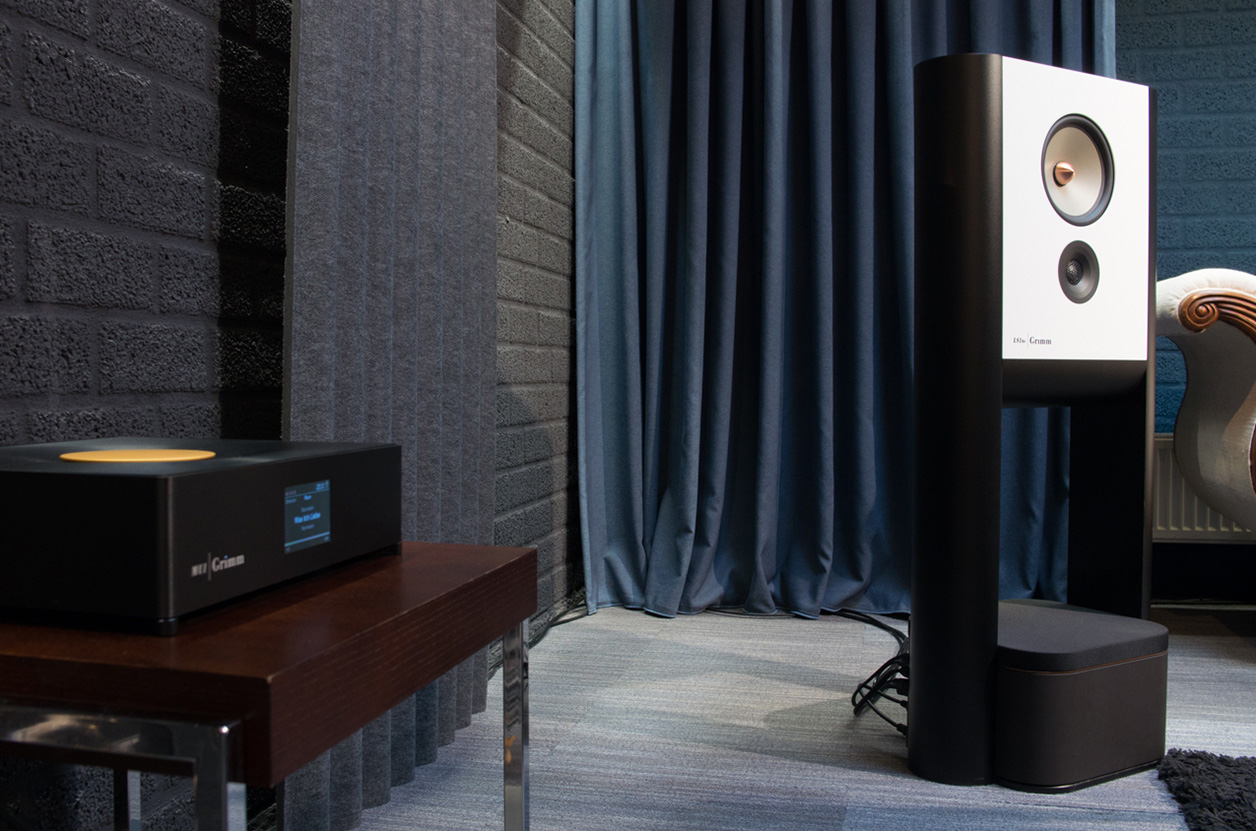For now we still enjoy the MU1's role to de-stress a DAC. How this works isn't just easy to hear within the first 30 seconds. Its effect grows the longer one listens. Our human hearing isn't only very sensitive to timing issues but noise. Both result from jitter, Grimm's sworn enemy. Listening for prolonged periods to a system not free of stress—be it jitter or the effects of a DAC's processor working too hard—pays forward that same stress onto our brains which register it as listening fatigue. At first, our brain is quite forgiving. Noise and distortion are filtered out or "overlooked" but only for a brief time. Just like a DAC can overload with computational demands, our brain will tire. At a certain point our attention fades. It's of no use now to change tracks or albums. A strange restlessness has won and the listening session is over.
 Controller for the golden disc
Controller for the golden disc
With the MU1 meanwhile, there wasn't even hint of stress, restlessness or boredom. We could listen for hours on end and to full albums. We could go through a solid collection of CDs including MA Recording's Sera Una Noche at 176.4kHz, to CDs ripped to hard disk, to local MU1 storage, to Tidal and Qobuz. While in CD mode, we ran a few tests with the PS Audio PWT by connecting its S/PDIF output directly to the DAC, then detouring through the Grimm. We already suspected that there would be an audible difference but still were surprised by just how big it was. Inserting the MU1 into the chain might look counterproductive because it adds hardware and signal transitions. But believe us, it does benefit transparency and ease. Point taken, audiophile beliefs to the contrary?


In conclusion, we can only call the Grimm Audio MU1 a statement effort in digital audio. It frees the user of all awkward computer-related hassles and includes a straightforward interface with Roon integration. The MU1 might appear to be idiosyncratic by not offering a USB output to instead rely on S/PDIF or parallel AES/EBU. With USB being bi-directional, there is audio signal available. It simply would bypass all of Grimm's elite jitter reduction and far more precise sample-rate conversion to in effect render the MU1 an expensive NUC with smart power supply. And how about that power supply which is so immune from external interference that not only doesn't it add jitter but is perfectly happy with a generic cord? It's all about keeping a precision clock in pristine condition.

Grimm Audio thus also stay clear of noisy marketing where the biggest numbers win. Even the MU1's physical weight is modest as are the clean simply looks. Only the price tag might look big but when seen as a solid investment lasting at least through the coming decade, it simply becomes realistic. With the announced upgrade path to MU2 and beyond interlaced with periodic easy software updates and the option of remote assistance, the MU1 can become the central hub for the most ambitious of hifi systems.

Compared to the Taiko SGM Extreme which we recently reviewed, the MU1 costs 2.5 times less, weighs 1/10th, at present includes no analog outputs (great if you already own a premium DAC) and already stands out for its remarkably effortless listening quality. That would seem to be cultivated by ground-up software code for far more precise digital filtering than those ubiquitous on-chip sample-rate converters and digital filters manage. We already know that Grimm's MU1 deserves an award. With the MU2 upgrade around the corner, we're simply not sure yet which award. Until we do know, consider the cherry on this cake waiting in the vial to ripen to the right color…